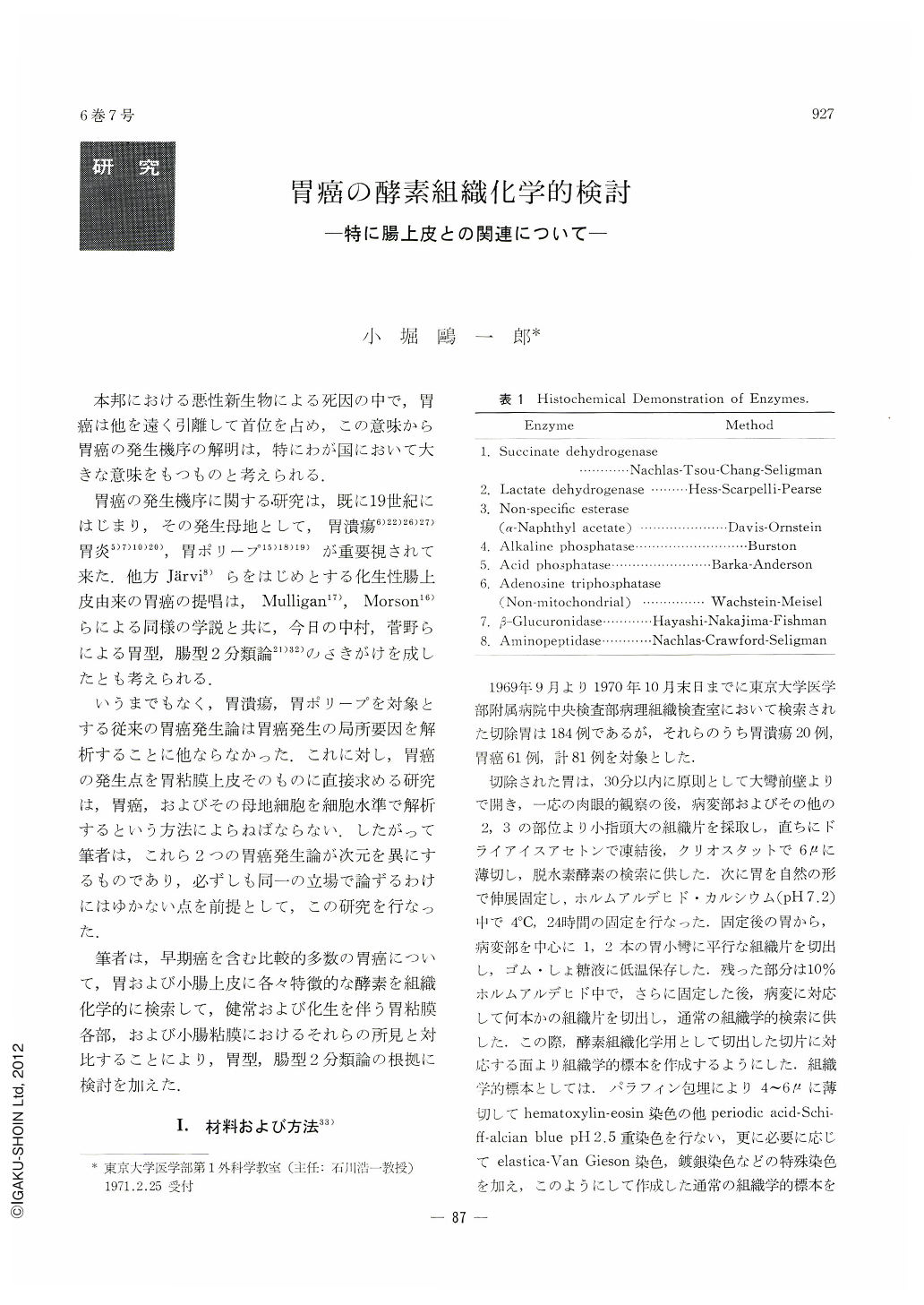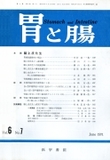Japanese
English
- 有料閲覧
- Abstract 文献概要
- 1ページ目 Look Inside
本邦における悪性新生物による死因の中で,胃癌は他を遠く引離して首位を占め,この意味から胃癌の発生機序の解明は,特にわが国において大きな意味をもつものと考えられる.
胃癌の発生機序に関する研究は,既に19世紀にはじまり,その発生母地として,胃潰瘍6)22)26)27)胃炎5)7)10)20),胃ポリープ15)18)19)が重要視されて来た.他方Järvi8)らをはじめとする化生性腸上皮由来の胃癌の提唱は,Mulligan17),Morson16)らによる同様の学説と共に,今日の中村,菅野らによる胃型,腸型2分類論21)32)のさきがけを成したとも考えられる.
The histochemical distribution of 8 enzymes in non-neoplastic and neoplastric epithelial cells was studied in 61 patients with gastric cancer and 20 patients with chronic gastric ulcer. Among these enzymes, alkaline phosphatase, non-mitochondrial adenosine triphosphatase, and aminopeptidase are characteristic of the intestinal epithelium and not found in the gastric epithelium except for that exhibited intestinal metaplasia. Sixty one gastric carcinomas could be divided into intestinal epithelial and non-intestinal epihelial types according to the activities of these characterizing enzymes. The 61 lesions include 28 well-differentiated and 33 undifferentiated carcinomas. In these two groups, the intestinal type shows each 65% and 51.5%. These data seem to show that there is no apparent correlation between the degree of histological differention and the enzyme activity, and that about 50% of gastric carcinoma reveal intestinal epithelial type. Whether intestinal epithelial gastric carcinoma arises directly from intestinal metaplasia or it must be regarded as an intestinal differention of the tumor could not be fully elucidated in this study.

Copyright © 1971, Igaku-Shoin Ltd. All rights reserved.


